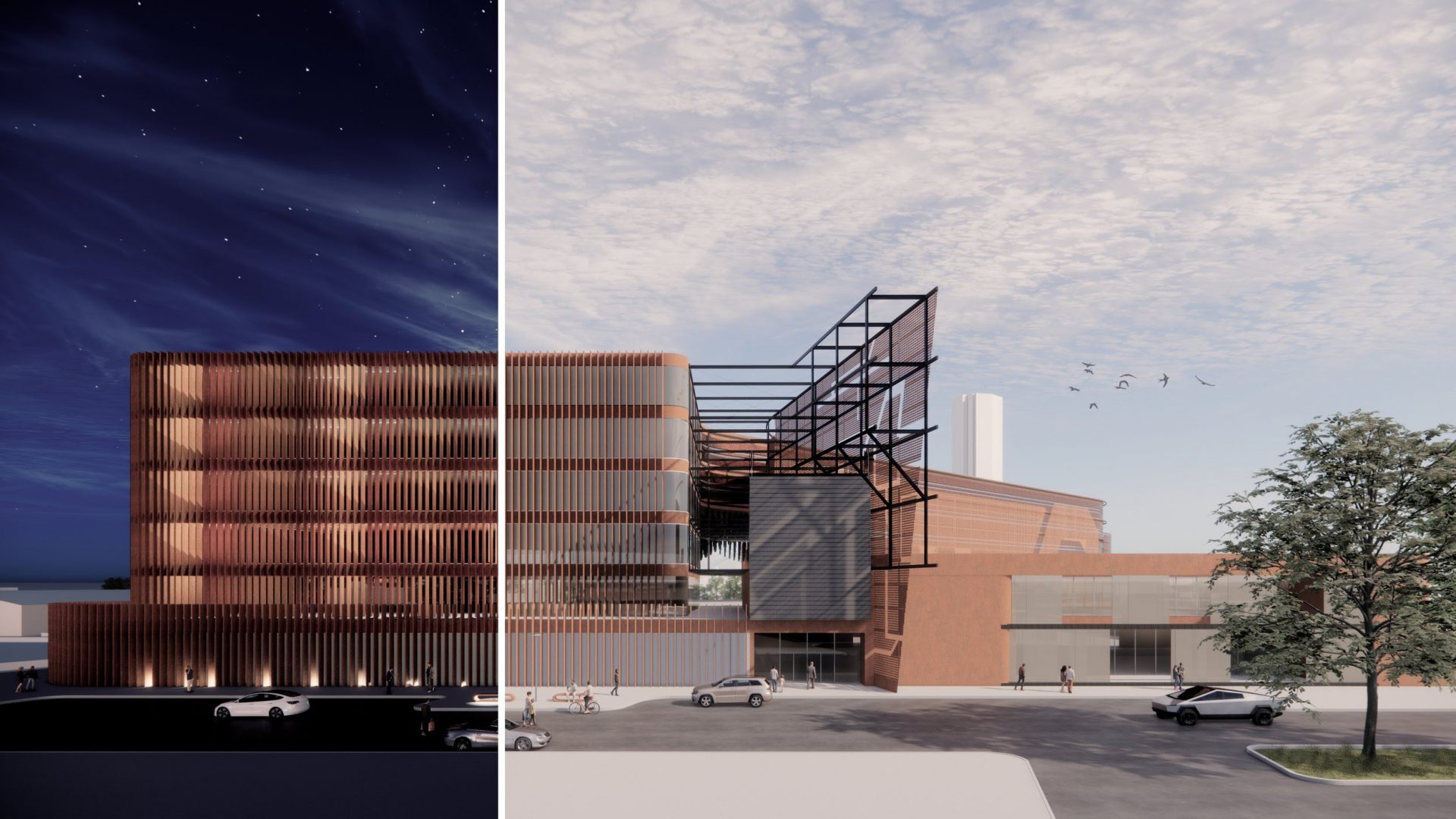
An illustration of the students' proposed redesign of the Oklahoma County Jail. (Image courtesy of JD Zogg)


An illustration of the students' proposed redesign of the Oklahoma County Jail. (Image courtesy of JD Zogg)
Students from OU’s Christopher C. Gibbs College of Architecture have created a redesign of the Oklahoma County Jail to shift focus from punishment to rehabilitation.
Senior architecture student J.D. Zogg led the 17-student redesign project, named “Reconstructing Incarceration,” to address the serious overcrowding and design problems with the Oklahoma County Jail. The team’s redesign makes the jail 48.5% more energy efficient and would save 5 million pounds of carbon dioxide through the use of clean energy and solar panels. The new plan is also structured to promote better mental health outcomes for inmates.
“[The redesign has] definitely a lot of coordination with the exterior spaces. A lot of glass and a lot of light, also accessible exterior space,” Zogg said. “So as much greenery as possible, as much open space as possible and as much light as possible.”
The student team presented their proposed design to the State Department in Washington D.C. in November, where Zogg said they received good feedback. A few weeks after that, the team presented the project again in the form of an art exhibition at the MAINSITE Contemporary Art Gallery in Norman.
OU architecture professor Marjorie Callahan led the OU Dream Course that began the project last fall. She said she’s been working with the Oklahoma County Jail Trust, a committee that evaluates jail conditions. Recently, the trust and the Oklahoma County Commissioners voted unanimously to build a new jail, and while Callahan doesn’t know if the students’ design will have an impact, she hopes it will.
“They have selected the architect Frankfort Short Bruza [for the new jail], and some of the members of Frankfort Short Bruza were at the exhibit,” Callahan said. “Do we know if we will influence them? We hope so. But it’s pretty early on, they’re currently trying to obtain all the funding to make this really go into fruition.”
Callahan said she was proud of how professional the student design team has been throughout the process, and that Zogg’s leadership role was instrumental in its success.
“This was not your typical studio project,” Callahan said. “We usually do beautiful aesthetic skyscrapers or housing projects. [It’s] the involvement of the students to take on such a sometimes-not-fun topic, and to be able to sit at the table now.”
The art exhibit of Reconstructing Incarceration can be viewed virtually here.